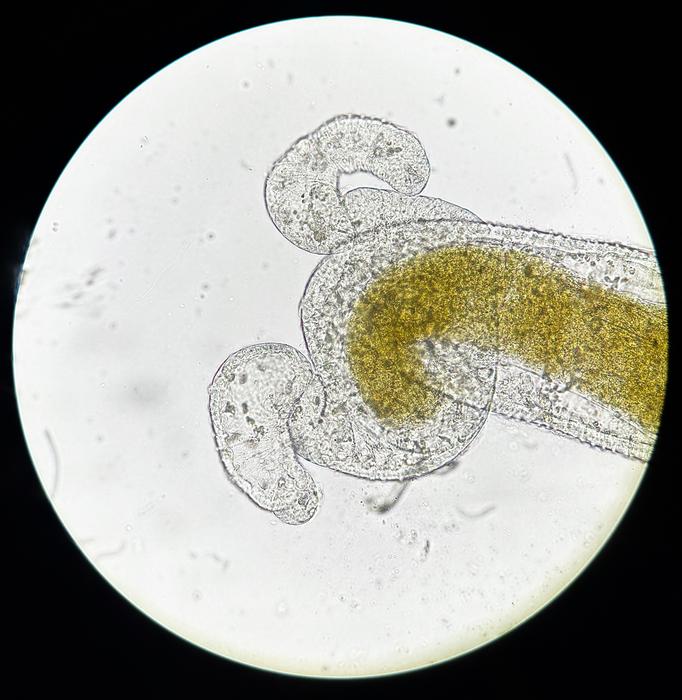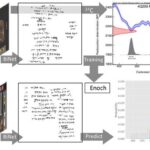
Climate Change, Heatwaves, and Disease Dynamics: Unraveling the Complex Links in a Changing World
In the relentless advance of global climate change, understanding the intricate ways in which extreme weather events influence disease spread is becoming an urgent scientific frontier. Recent groundbreaking research from Trinity College Dublin illuminates how heatwaves—a phenomenon intensifying in frequency and severity—profoundly alter infectious disease outcomes. Published in the prestigious journal PLOS Climate, this study moves beyond simplistic temperature averages, unveiling the nuanced interplay between heatwave characteristics and disease propagation, with implications that ripple across ecological and human health landscapes.
The pioneering research centers on an experimental model comprising the water flea, Daphnia magna, and its obligate microsporidian parasite, Ordospora colligata. This host-pathogen system is an established proxy for environmentally transmitted diseases, offering a controlled context to experimentally dissect the effects of varying thermal stresses. By manipulating both the amplitude (temperature increase) and duration of heatwaves across multiple baseline temperatures, the investigators engineered a suite of 64 unique heatwave scenarios to probe pathogen prevalence and proliferation with unprecedented granularity.
.adsslot_Diqg3Fx6lf{width:728px !important;height:90px !important;}
@media(max-width:1199px){ .adsslot_Diqg3Fx6lf{width:468px !important;height:60px !important;}
}
@media(max-width:767px){ .adsslot_Diqg3Fx6lf{width:320px !important;height:50px !important;}
}
ADVERTISEMENT
Traditional epidemiological models often overlook the fluctuating nature of temperature extremes, focusing instead on average climatic conditions. However, the complex temporal dynamics of heatwaves—including their intensity, persistence, and timing relative to pathogen exposure—significantly modulate infection dynamics. The Trinity team’s findings demonstrate stark, non-linear relationships in which disease burden can increase by up to thirteen-fold under certain heatwave configurations compared to steady-state temperature regimes, a magnitude of impact previously underappreciated in predictive modeling.
One key revelation from this study is the context-dependent nature of heatwave effects. Heatwave attributes do not act in isolation; rather, their impacts on parasite load and host susceptibility are mediated by baseline environmental temperatures and the precise timing of pathogen exposure. For instance, a brief but intense heatwave occurring at a critical infection window may dramatically amplify parasite proliferation, whereas a prolonged but moderate temperature spike might exert lesser or even differential effects. These complexities underscore the limitations of generalized models and the necessity for incorporating temporal heterogeneity in climate-disease projections.
Adding further depth to this discourse, the research contrasts heatwaves with cold snaps, another form of temperature variability. Unlike cold snaps, which tend to suppress pathogen proliferation or have muted effects, heatwaves uniquely exacerbate parasite burdens considerably. This finding not only differentiates the biotic responses to opposing thermal stresses but also emphasizes the asymmetric consequences of warming extremes on disease ecology, which may shape future epidemic trajectories in a warming world.
The broader implications resonate far beyond the laboratory. Climate change-driven increases in heatwave frequency and intensity pose challenges to public health preparedness and ecological stability alike. Notably, approximately 58% of human pathogenic diseases are reported to have been aggravated by climate change, with temperature fluctuations altering host-pathogen interactions through mechanisms such as immune modulation and behavioral shifts. The Trinity study’s mechanistic insights pave the way for more sophisticated, context-aware disease models that better capture these dynamics.
Of particular concern is the observed potential for heatwaves to influence outbreaks of vector-borne diseases. Warming trends facilitate the northward expansion of mosquito species capable of transmitting debilitating viruses and parasites—including dengue, Zika, and malaria—into previously inhospitable regions of Europe. While Ireland has remained relatively insulated from these incursions, the findings underscore a global imperative to anticipate how extreme weather patterns reconfigure disease landscapes, affecting both vector populations and host susceptibility.
From an ecological standpoint, the role of Daphnia magna as a keystone species in freshwater ecosystems adds an additional layer of significance. These tiny crustaceans serve as primary consumers of algae, maintaining water quality and supporting aquatic food webs. Disease outbreaks precipitated or exacerbated by thermal extremes could lead to population crashes in Daphnia, potentially triggering algal blooms and further ecological disturbances. Thus, understanding the pathogen dynamics under heat stress is critical not only for human health risk assessments but also for ecosystem resilience.
The experimental approach employed by McCartan and colleagues is emblematic of the power of animal disease models in climate research. By enabling precise control over environmental variables, such models offer unparalleled resolution in teasing apart multifactorial influences on disease outcomes—insights that are often unattainable in field studies of wild or human populations due to confounding factors. While extrapolation requires caution, the shared biological principles uncovered provide a valuable framework for considering climate impacts on a range of infectious diseases.
The research also highlights critical knowledge gaps and directions for future inquiry. Predictive models must evolve to incorporate fluctuations in temperature extremes—including both amplitude and temporal patterns—rather than relying solely on mean climate data. Additionally, exploring how timing of pathogen exposure relative to heatwave events influences infection progression could reveal window periods of heightened vulnerability, informing targeted intervention strategies.
The findings align with broader epidemiological observations. For example, some analyses suggest that nearly 70% of COVID-19 cases during the summer of 2022 might have been preventable had heatwaves not intensified viral transmission during that period. This underscores the real-world relevance of capturing temperature variability in infectious disease forecasting, and the potential impact such understanding could have on public health policy and mitigation efforts.
Furthermore, the work serves as a clarion call to integrate climate extremes into disease ecology frameworks continuously. As global temperatures rise and weather patterns become more erratic, static models that ignore the complexity of thermal stress patterns risk underestimating outbreak potentials or mistiming health warnings. This study therefore acts as both a scientific milestone and a strategic guidepost for enhancing epidemic preparedness in a warming world.
Ultimately, the Trinity College Dublin research enriches our comprehension of how heatwaves, as a discrete yet potent facet of climate change, redefine interactions within host-pathogen systems. Through meticulous experimentation and nuanced analysis, it reveals that the devil is in the details of thermal stress—details that matter profoundly for predicting and mitigating disease risks under our rapidly shifting climate regime.
Subject of Research: Effects of heatwaves and temperature variability on disease dynamics in environmentally transmitted host-pathogen systems, with a focus on Daphnia magna and Ordospora colligata.
Article Title: [Not provided in the source content]
News Publication Date: [Not provided in the source content]
Web References: [Not provided in the source content; original source: PLOS Climate]
References: McCartan, N., et al. PLOS Climate, [Details not provided]
Image Credits: Niamh McCartan, Trinity College Dublin
Keywords: climate change, heatwaves, disease dynamics, host-pathogen interaction, Daphnia magna, microsporidian parasite, thermal stress, epidemiology, vector-borne diseases, freshwater ecology, temperature variability
Tags: climate change and disease spreadDaphnia magna and microsporidian parasitesecological impacts of climate changeepidemiological models and temperature extremesexperimental models in disease dynamicsextreme weather effects on human healthheatwave characteristics and health implicationsheatwaves impact on parasitesinfectious disease outcomes in changing climatespathogen prevalence during heatwavesresearch on heatwaves and disease transmissionTrinity College Dublin study on climate and disease


